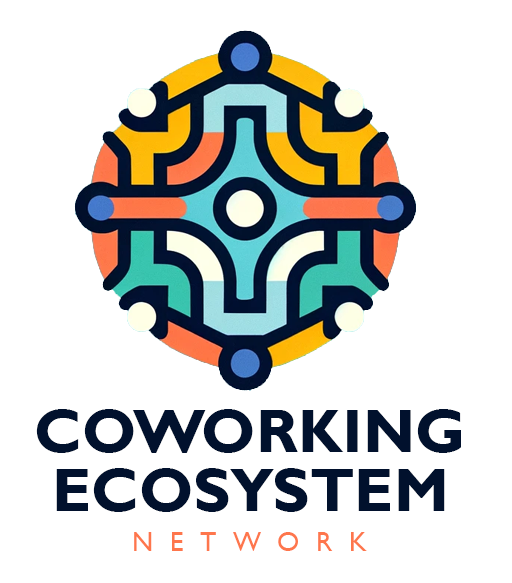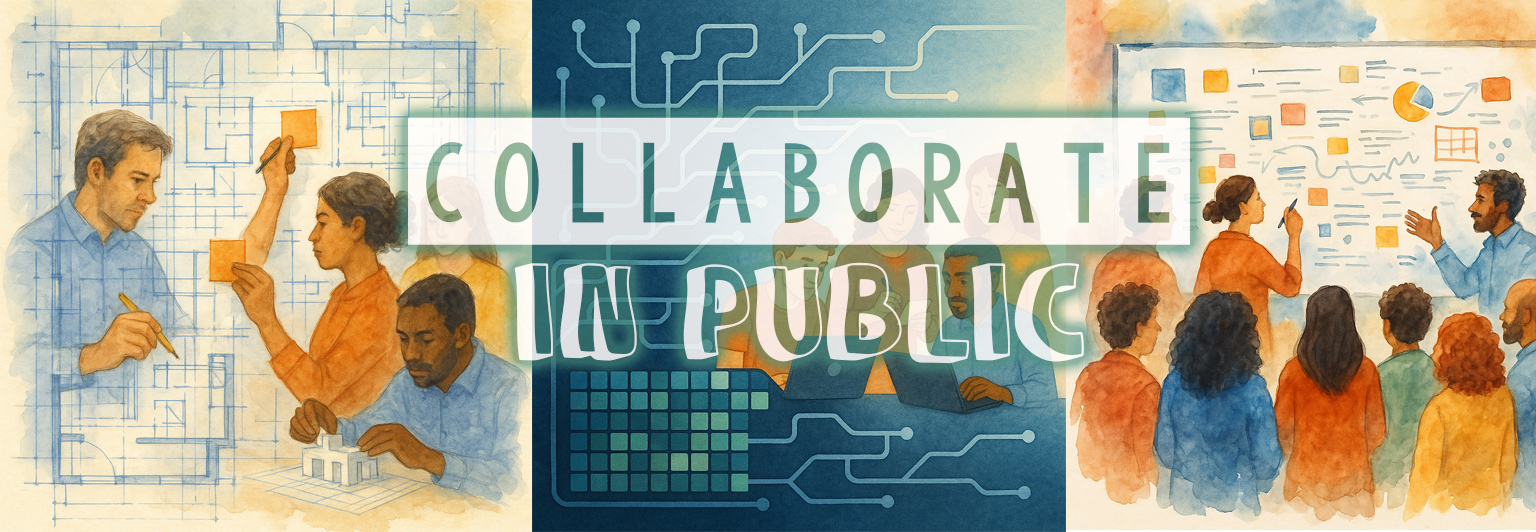The entrepreneurial world has embraced “building in public” – sharing your journey, metrics, and failures openly as you create something new. It’s been transformative for individual founders, accountability, community, and authentic marketing in one stroke.
But maybe the next leap forward isn’t just building in public. It’s collaborating in public.
The Evolution of Sharing and Co-Creation
“Building in public” emerged from the solo entrepreneur zeitgeist. The builder is the protagonist, the audience are witnesses. Value flows primarily one way: followers get inspiration and lessons, the builder gets accountability and social proof. It’s inherently individualistic—one person’s journey made visible to many.
“Building in community” takes this a step further, acknowledging that creation isn’t a solo act but emerges from relationships, conversations, and shared contexts. The community isn’t just watching—they’re stakeholders, co-creators, sources of wisdom and resources.
But “collaborating in public” pushes us into entirely new territory. It’s about making the actual process of working together visible, participatory, and open. And importantly, it’s community that provides the foundation for this co-creation—the trust, shared space, and connective tissue that allow collaboration to flourish. Think of how open source development works, or how the best coworking spaces have glass-walled meeting rooms not for surveillance, but for osmotic learning.
Why This Matters Now
We’re living through a fundamental shift in how innovation happens. The myth of the lone genius is crumbling. Most breakthroughs emerge from communities of practice, from ideas bouncing between minds, from the fertile chaos of diverse perspectives colliding.

The coworking industry understands this intuitively. Every successful coworking space (and every participant in the industry) knows that isolation kills creativity and innovation. The magic happens in the spaces between desks, in casual conversations by the coffee machine, in serendipitous connections between people working on seemingly unrelated projects.
What Collaborating in Public Looks Like
Collaborating in public means:
- Making process visible, not just outcomes. Instead of announcing finished products, you share the messy middle – the debates, the iterations, the false starts, the breakthrough moments.
- Inviting participation at every stage. Your “audience” becomes your co-creation team. They don’t just consume your content; they contribute to your thinking, challenge your assumptions, and help shape what emerges.
- Defaulting to transparency. Unless there’s a compelling reason for privacy, everything happens in the open. Ideas, resources, learnings, even failures become communal assets.
- Building bridges, not walls. Success becomes interconnected rather than zero-sum. Your wins enable others’ wins, creating network effects that amplify everyone’s impact.
Learning from Open Source
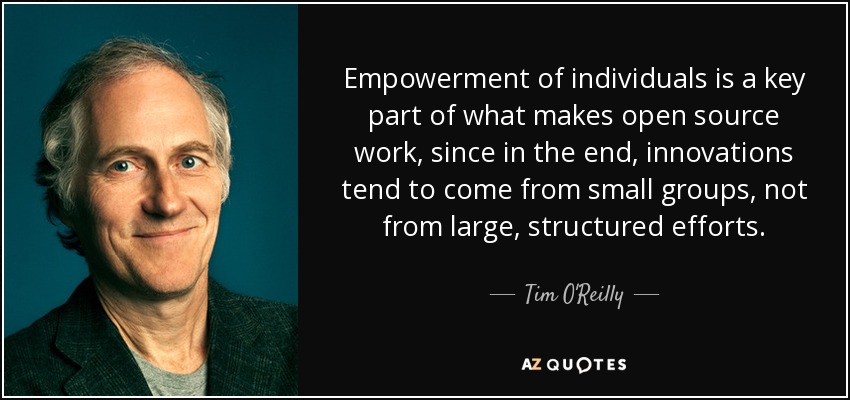
The clearest parallel for this evolution comes from software development. Early computing was completely closed – proprietary code, secret processes, individual programmers working in isolation. Then came developers sharing their work openly, making their process visible but still largely broadcasting individual efforts to an audience.
The breakthrough came with projects like Linux, where development became truly participatory. Linus Torvalds didn’t just share his kernel publicly – he actively invited others to contribute, debug, and improve it. The process became collaborative, but still had clear direction.
Today’s massive ecosystems like GitHub represent full collaboration in public. Thousands of projects cross-pollinate, developers contribute across multiple initiatives, and the entire software development process – from ideation to deployment – happens transparently. Success becomes interconnected rather than competitive.
Open source didn’t just change how software gets made – it changed the fundamental economics of software development. Instead of scarcity-based competition, it created abundance through shared knowledge and coordinated effort.
The Laboratory: E² and the Coworking Ecosystem
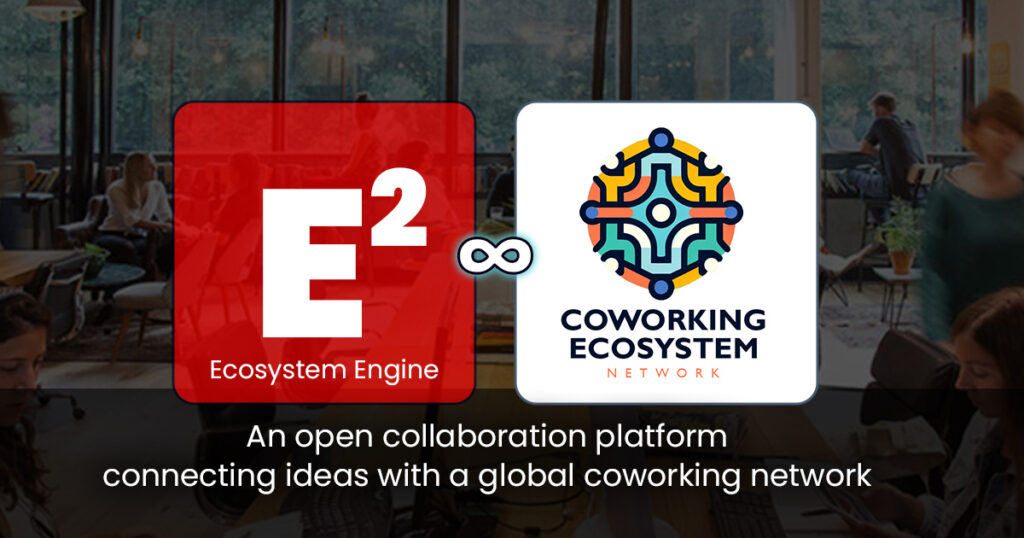
This isn’t just theory. We’re building it.
First, we brought together the Coworking Ecosystem Network to map the broader landscape and articulate a vision for collaborative industry growth. Then we built E² – an open collaboration engine for the coworking industry.
But E² isn’t about prescribing what kinds of collaborations should emerge. It’s infrastructure for serendipity. Someone proposes an idea – it could be anything – describes it briefly, tags it so the right people can find it, and then… who knows what happens next? That uncertainty is actually the feature, not a bug.
The platform brings together the perfect ingredients for innovation: companies with resources and expertise, individuals with passion and time, ideas that need nurturing, and a shared ecosystem that provides context and connection. It’s designed for emergence, not predetermined outcomes.
The Compound Effect
What’s most exciting about collaborating in public: it creates exponential returns rather than linear ones.
When ideas are shared openly, they don’t just reach more people – they get refined, combined, and amplified in ways no individual could have imagined. When collaboration processes are transparent, they become templates others can adapt and improve. When successes are celebrated collectively, they inspire more ambitious collaborative attempts.
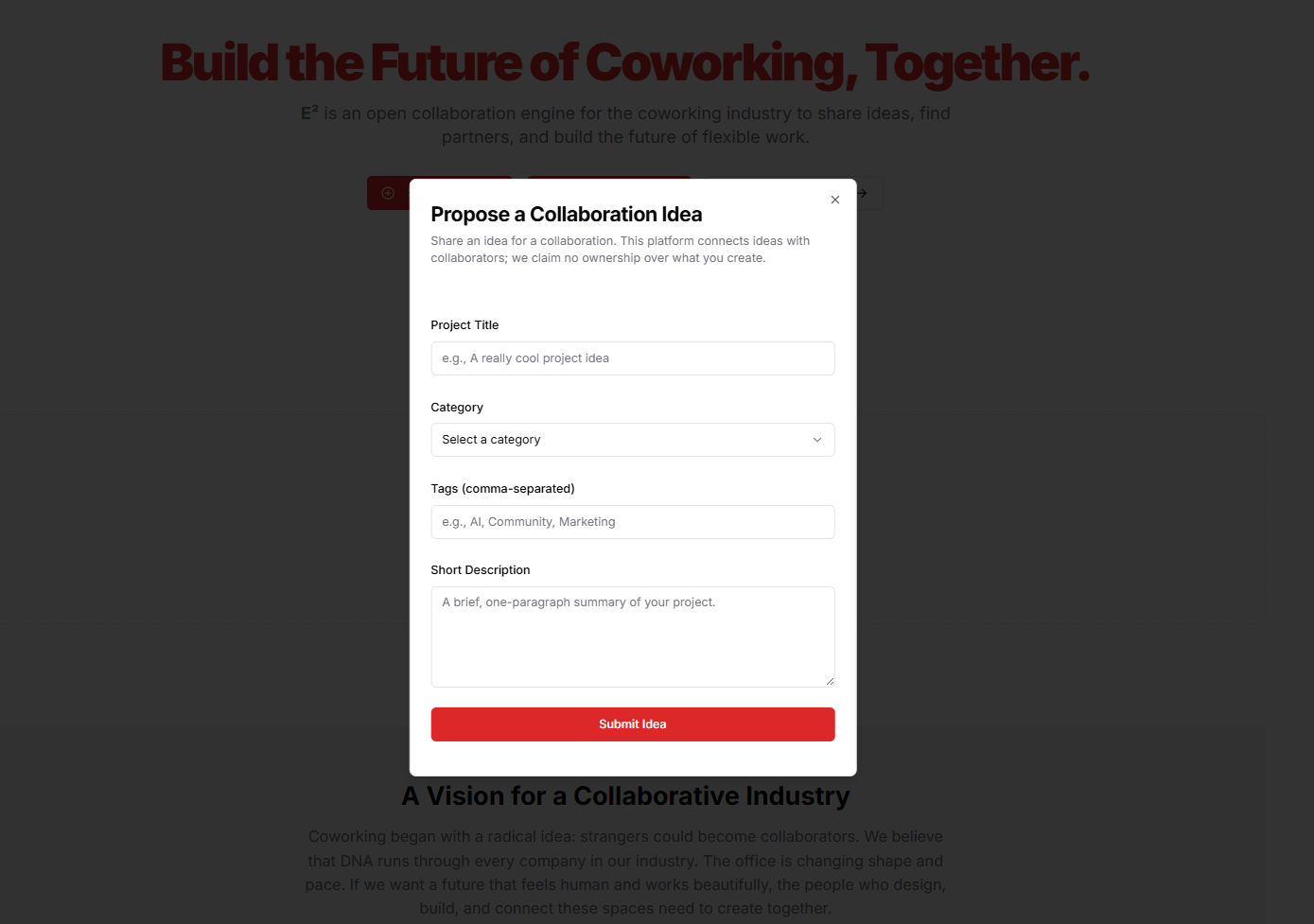
The magic happens in these unexpected combinations – when different stakeholders with complementary skills and shared vision find each other.
The New Rules of the Game
Collaborating in public requires new habits and new courage:
Share early and often.
Don’t wait until your ideas are polished. The rough edges are where collaboration happens.
Make your process findable. Use consistent tags, clear documentation, and open communication channels so others can follow along and jump in.
Celebrate others’ wins as enthusiastically as your own. In a collaborative ecosystem, everyone’s success contributes to the whole.
Default to yes.
When someone wants to build on your work, remix your ideas, or take your project in new directions, lean into the possibilities rather than protecting your territory.
Design for participation. Don’t just allow collaboration – actively invite it. Create clear entry points for people to contribute their unique perspectives and skills.
The Future We’re Building
Are we moving from ego-driven creation to ecosystem-driven creation, from personal brands to community brands, from competition to “coopetition” where success becomes interconnected rather than zero-sum?
The coworking industry – built on the fundamental belief that we do better work together – has the opportunity to model this new way of operating not just within our spaces, but as an industry ecosystem.
When we collaborate in public, we don’t just build better products or services. We build better ways of building. We create templates for cooperation that ripple out beyond our immediate projects. We prove that transparency and generosity aren’t just nice ideals – they’re competitive advantages in a networked world.
The future belongs to those who can orchestrate collective intelligence, who can turn competition into collaboration, who can make the invisible visible and the private public.
The question isn’t whether you’re ready to build in public.
The question is: are you ready to collaborate in public?
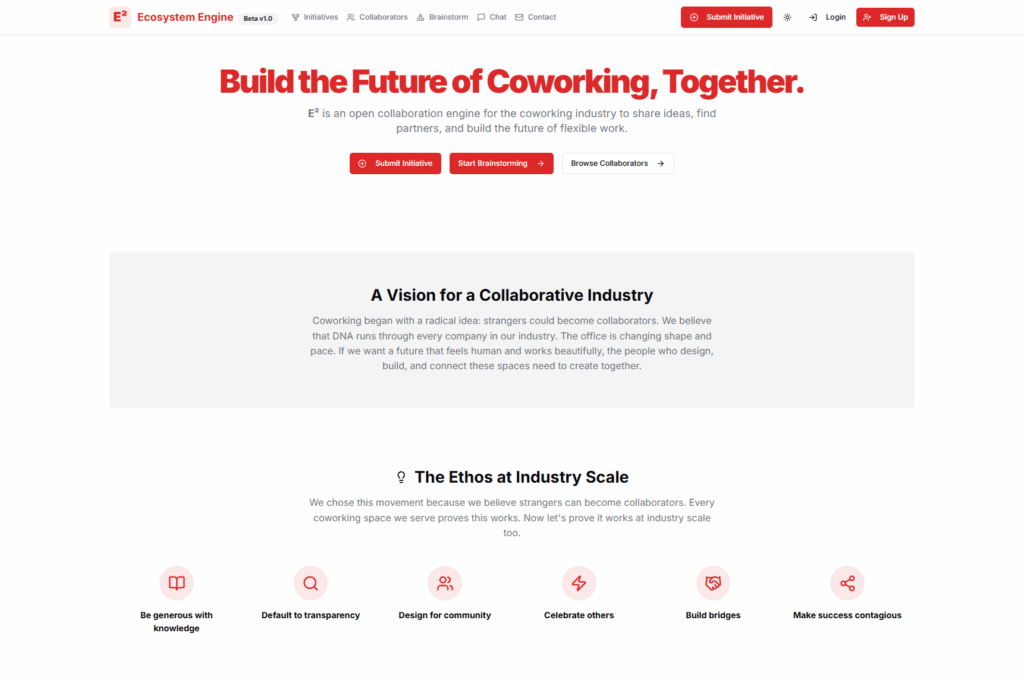
Ready to join the experiment? Connect with us at the Coworking Ecosystem Network or reach out about early access to E². Let’s build the future of collaboration together – in public, in community, in the open.
